At Ocean Dental Singapore, we use dental x-rays to detect hidden oral issues before they become costly problems.
These images help us diagnose conditions that cannot be seen with the naked eye.
Early detection supports more timely intervention.
We have served the Singapore community for over 8 years.
Our x-ray services are designed for safety, speed, and clinical accuracy.
The cost of dental x-rays in Singapore can vary depending on the type of x-ray needed and the complexity of your case.
At Ocean Dental, we believe in transparent pricing, so you’ll always know what to expect before your appointment.
Our fees are competitive, and there are no hidden charges.
Many dental insurance plans in Singapore cover the cost of routine dental x-rays as part of your regular check up or preventive care.
If you have questions about your coverage, our friendly team can help you understand your benefits and submit any necessary claims.
Investing in dental x-ray is an important part of maintaining your oral health, as these images help detect problems early and guide effective treatment.
If you need a personalized quote or want to know more about payment options, just give us a call or visit our clinic.
X rays can help us catch problems early—when they’re still small and easy to fix.
They can reveal:
Unlike a standard dental exam, X-rays provide additional diagnostic information that cannot be obtained through a regular exam, such as revealing hidden decay, infections, and abnormalities beneath the surface.
X-rays help detect pathology such as hidden decay, abscesses, or bone abnormalities that are not visible during a standard exam.
Skipping x-rays may mean missing a hidden issue that gets worse over time.
With timely imaging, you avoid unnecessary pain and future dental costs. X-rays provide diagnostic information that a routine examination might miss, making them an essential part of comprehensive oral health evaluations.
Dental X-rays are also crucial for identifying underlying health issues that may not be visible during a regular check-up.
Ocean Dental’s approach:
We only recommend x-rays when they’re truly needed.
And we’ll always explain why they’re being done. X-rays may be avoided or limited in certain situations, such as during pregnancy or when recent images are available, to ensure your safety and minimize unnecessary exposure.
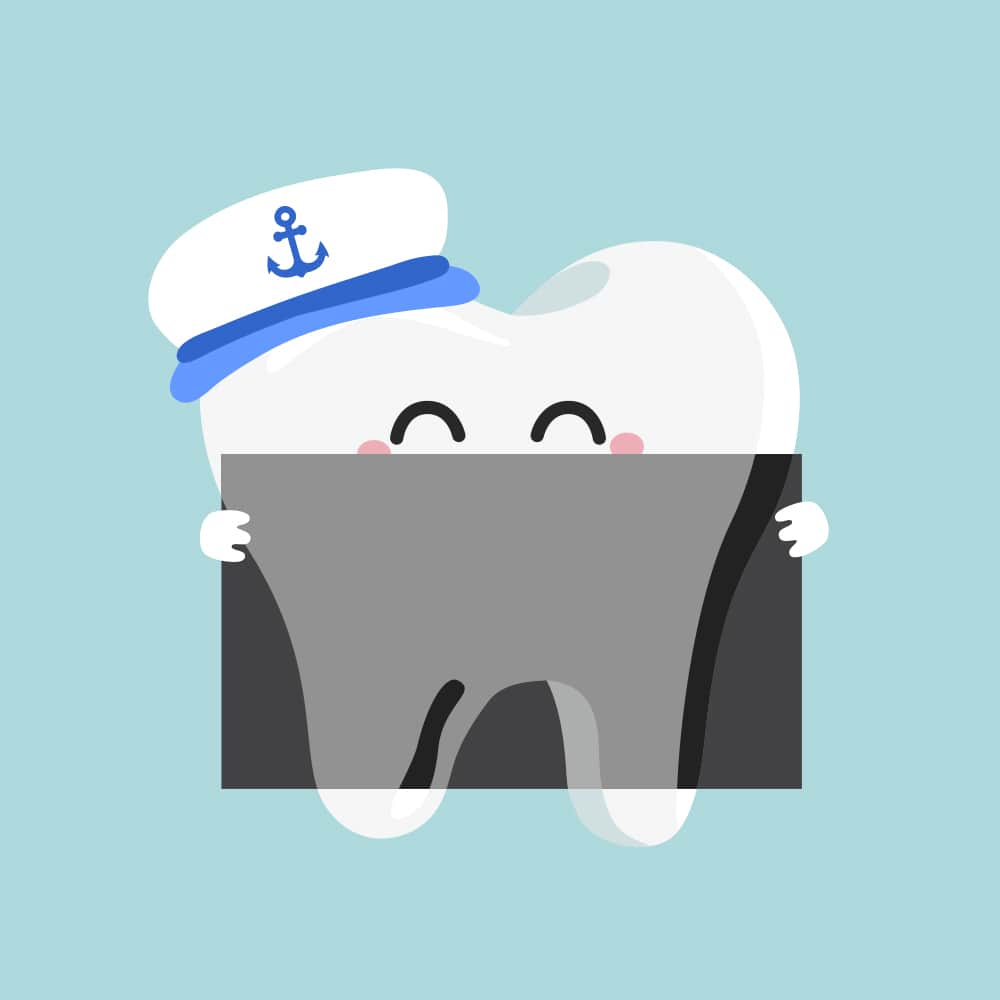

We provide both intraoral and extraoral x-rays depending on your needs.
Radiographs are essential diagnostic tools in dentistry, as they help detect cavities, assess roots, monitor tooth development, and plan treatments.
When taking dental X-rays, the process involves careful preparation and positioning to capture a clear x-ray image.
An x-ray machine is used to obtain detailed images of your teeth and jaw structures, which are crucial for accurate diagnosis and treatment planning.
It is important to follow the correct order and safety protocols when performing dental X-rays to ensure patient safety and compliance with professional standards.
These are taken with the sensor inside your mouth.
These are taken from outside your mouth.
We use digital x-ray technology, which reduces radiation and provides faster, clearer results.
Yes, dental x-rays are safe when done responsibly.
Radiation levels are low, especially with digital machines.
In fact, our digital x-rays reduce exposure by up to 90% compared to traditional methods.
The amount of radiation from a dental x-ray is comparable to just a 1-3days of natural background radiation, which is the everyday exposure we all receive from our environment.
We also take extra steps to protect you.
You’ll wear a lead apron and thyroid collar during the process. For pregnant patients, we avoid x-rays unless it’s an emergency.
Ocean Dental’s commitment:
We follow Singapore’s health and safety standards strictly.
Your well-being is always our top priority.
It depends on your age, dental history, and current oral health.
When considering how often dental X-rays should be taken, factors such as age, oral health status, and individual risk level play a key role in determining the recommended frequency.
As a general guide for adults in Singapore:
At Ocean Dental, we personalise the schedule based on your individual case.
We’ll let you know when it’s time—and why it’s needed.
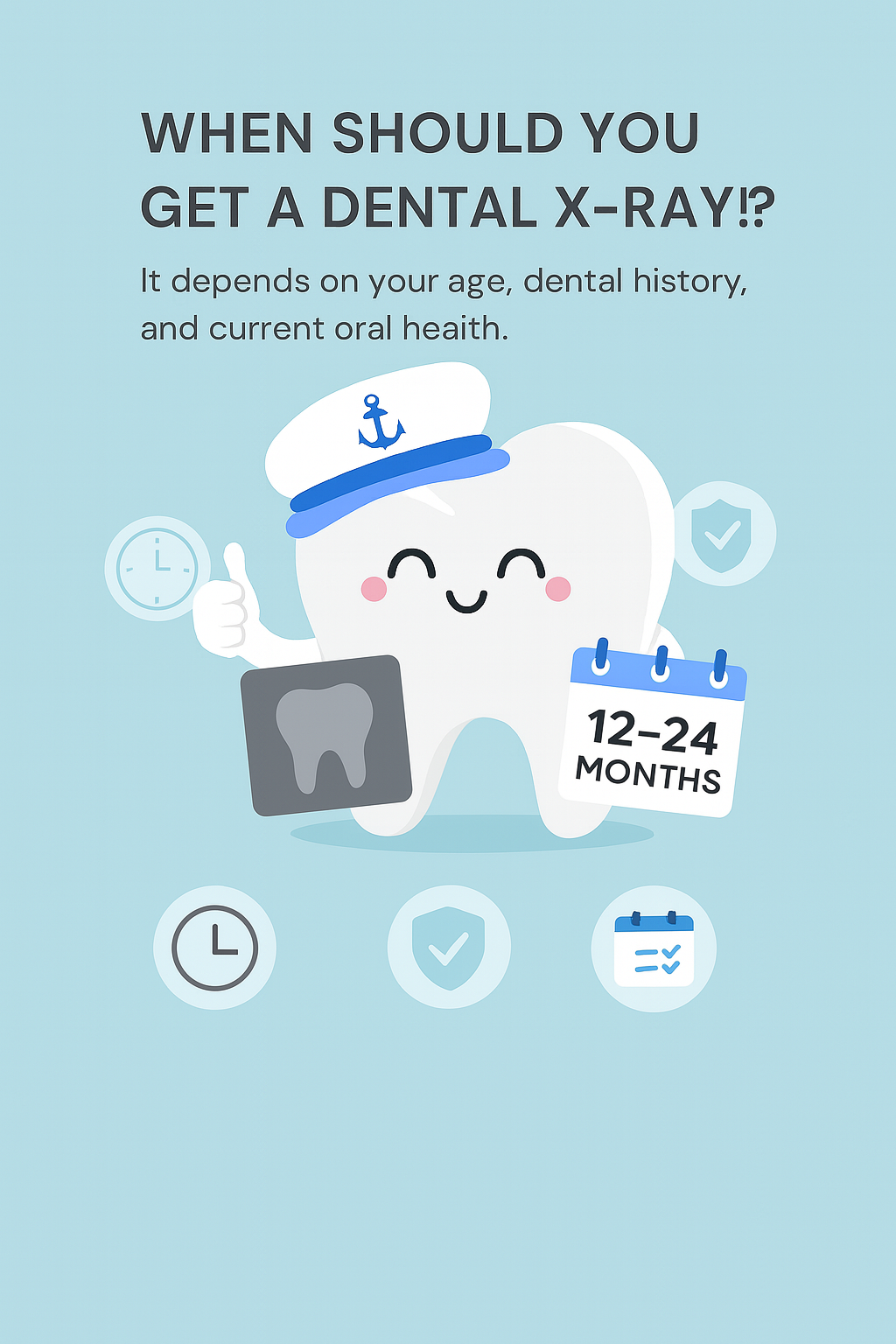
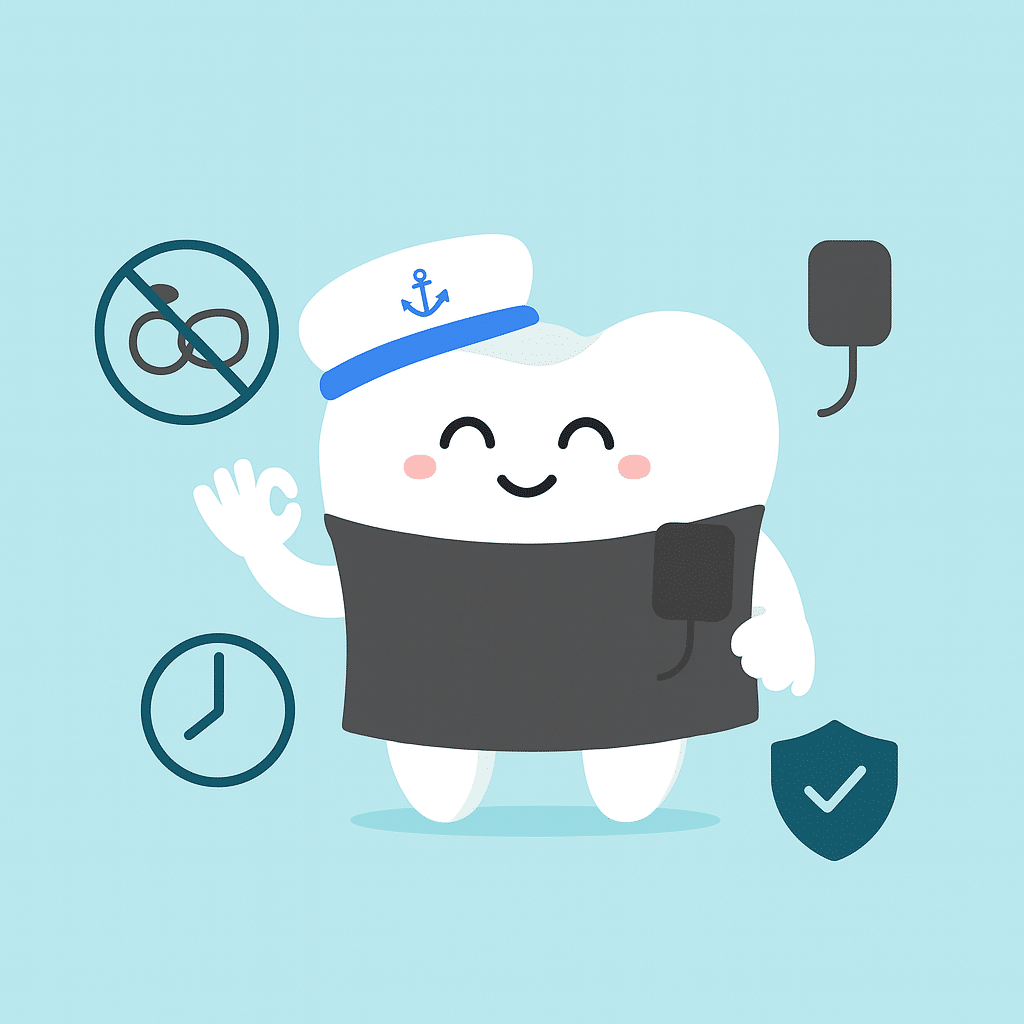
Getting ready for dental x-rays is simple and stress-free.
Most patients don’t need to do anything special before their appointment.
The entire x-ray process usually takes just a few minutes, and you can return to your normal activities right after.
If you have any questions or concerns, don’t hesitate to ask the dentist before the x-ray begins.
Understanding what to expect can help you feel more at ease and confident during your dental x-ray appointment.
Dental x-rays help us plan treatments more precisely.
Here’s how we use them in common procedures:
Dental X-rays can also help us assess bone density, which is crucial for diagnosing gum disease and planning treatments like dental implants.
That means fewer surprises — and better long-term outcomes.
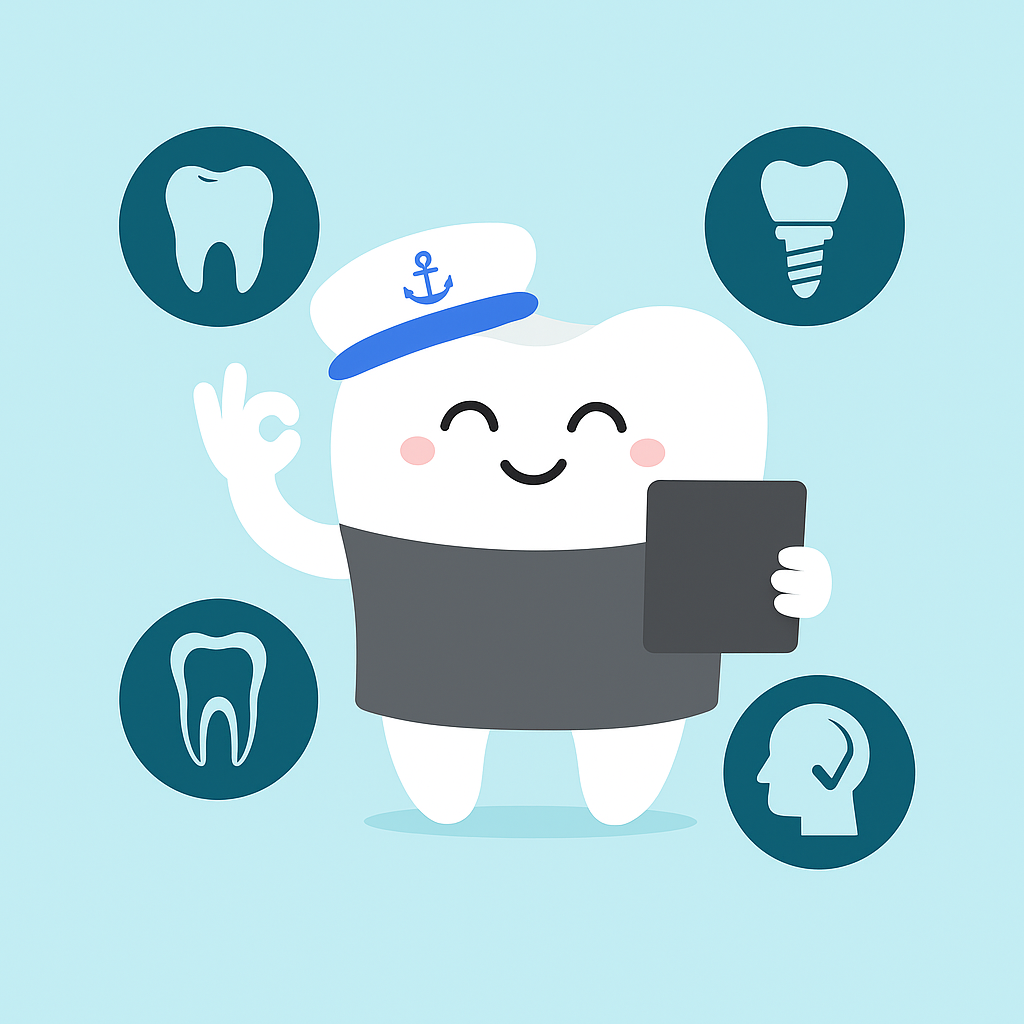
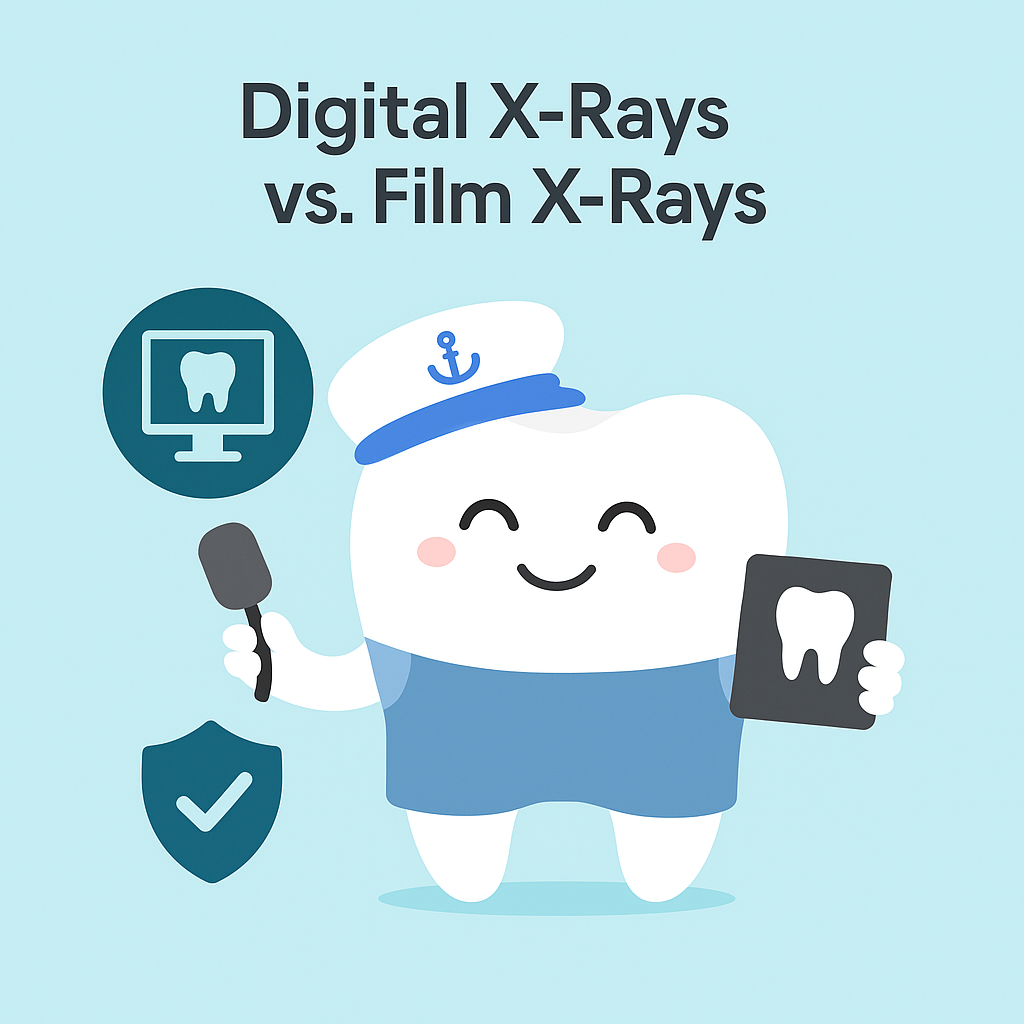
There are two main types of dental x-ray technology used in dentistry today:
Digital x-rays use advanced electronic sensors to capture detailed images of your teeth and surrounding structures instantly.
This technology allows the dentist to view, enhance, and share x-ray images quickly, making diagnosis and treatment planning more efficient.
Compared to film x-rays, digital x-rays are generally faster and more comfortable for the patient.
They also require less radiation, making them a safer choice for routine dental exams.
The images produced by digital x-rays are clearer and can be easily stored in your dental records for future reference.
While both types of dental x-rays are effective for detecting issues such as tooth decay, bone loss, and abnormalities, digital x-rays offer significant advantages in terms of speed, safety, and image quality.
At Ocean Dental, we use digital x-ray equipment to ensure you receive the best possible care.
When it comes to dental x-rays during pregnancy, safety is always the top priority.
In most cases, dental x-rays are postponed, especially during the first trimester, unless they are absolutely necessary for diagnosis or urgent treatment.
Leading health organizations, such as the American College of Radiology and the American Dental Association, recommend delaying routine dental x-rays until after pregnancy whenever possible.
If a dental x-ray is essential during pregnancy, your dentist will take every precaution to minimize radiation exposure.
This includes using a lead apron and thyroid shield to protect both you and your baby.
Furthermore, the x-ray beam for dental x-ray is focused on the mouth, and does not target the abdomen or uterus, making fetal exposure extremely minimal.
Our dentist will always weigh the benefits of dental x-rays—such as detecting infections or other problems—against any potential risks.
It’s important to let your dentist know about your pregnancy status before any x-ray procedure.
By working together, you can ensure that your oral health is managed safely throughout your pregnancy.
Good oral hygiene and regular check ups can help prevent issues that might require x rays, but if a dental x-ray is needed, rest assured that the lowest possible radiation dose and strict safety guidelines will be followed.
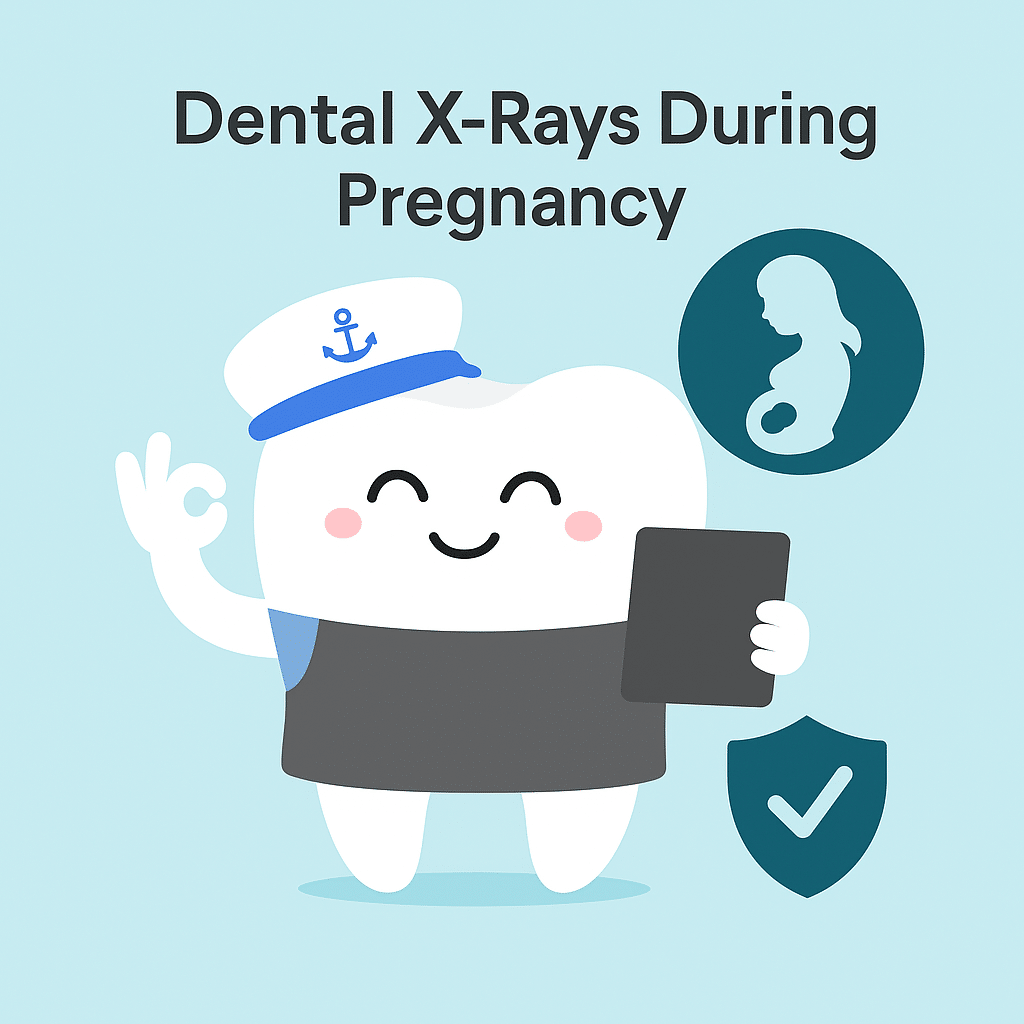
If there are symptoms or risk factors that can’t be seen with the eye, then yes.
We’ll explain why it’s needed.
The cost of dental X-rays vary depending on the type of X-ray taken.
Panoramic (OPG): $70
Intra-oral (periapical/ bitewing): $25
Lateral Cephalogram: $70
Cone-Beam Computed Tomography (CBCT): $150
Note: Government Goods and Services Tax (GST) applies
Dental X-rays are considered to be very safe due to its low radiation dosage which is comparable to just a few hours of natural background radiation in Singapore or less than a short flight.
Furthermore, we further minimize our patient’s radiation exposure by providing a lead apron or thyroid shield when taking the radiograph.
Thus, the amount of exposure is kept to minimal and is considered to be not harmful.
Definitely!
Since all our X-rays are digital, all you have to do is to request and provide us with your email address and our staff will send them over to you via email.
Alternatively, feel free to snap a photo using your phone’s camera.
Dental X-rays are usually avoided during pregnancy, but if the event of any dental emergency and taking of X-rays is necessary, the use of a lead apron and/or thyroid shield will offer protection against radiation exposure.
X-rays can be taken for breastfeeding mothers and women trying to get pregnant.
No. It’s quick and completely painless.
Yes, with proper shielding and when clinically necessary.
Children benefit from early detection, too.
Don’t hesitate to contact us!
WhatsApp us